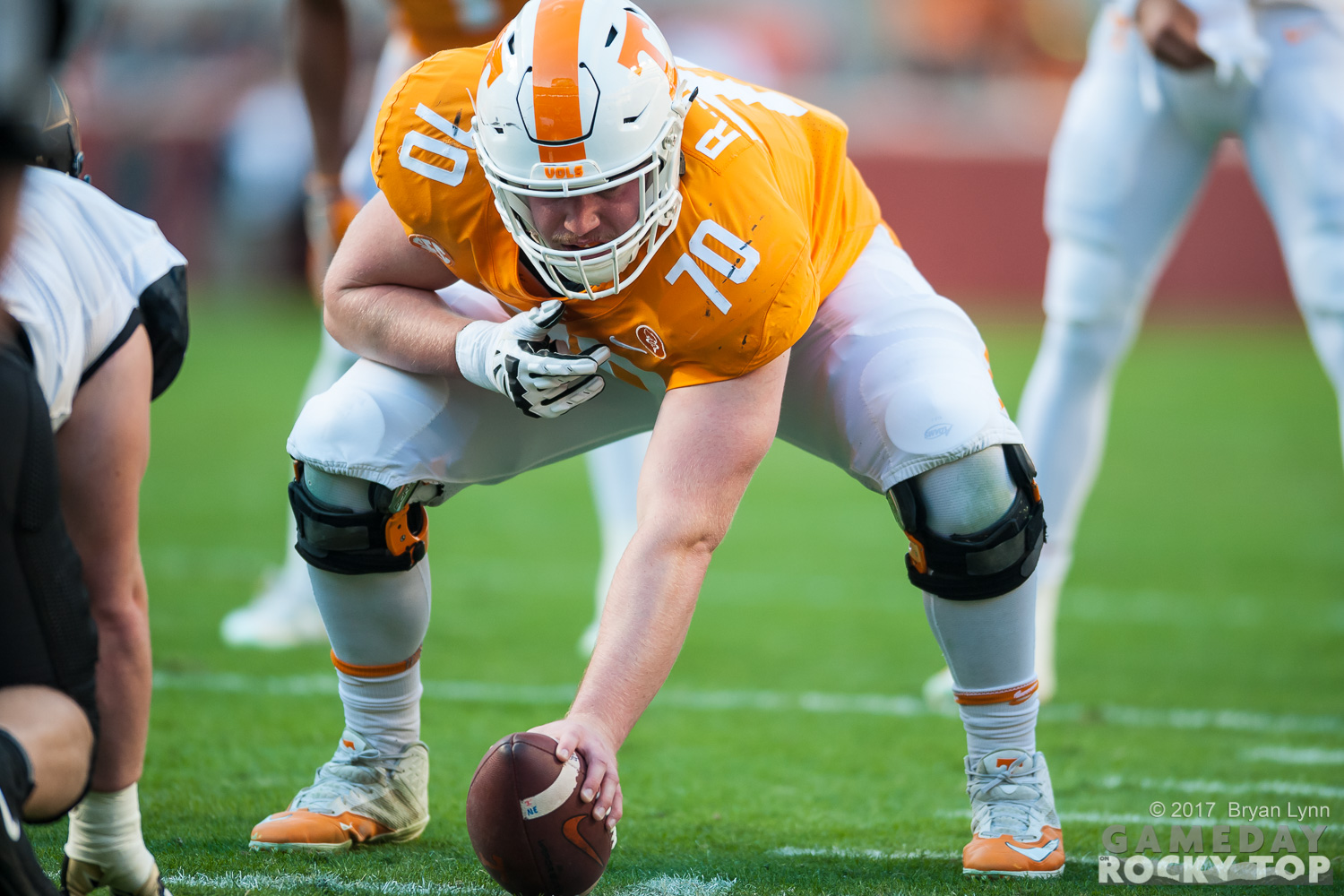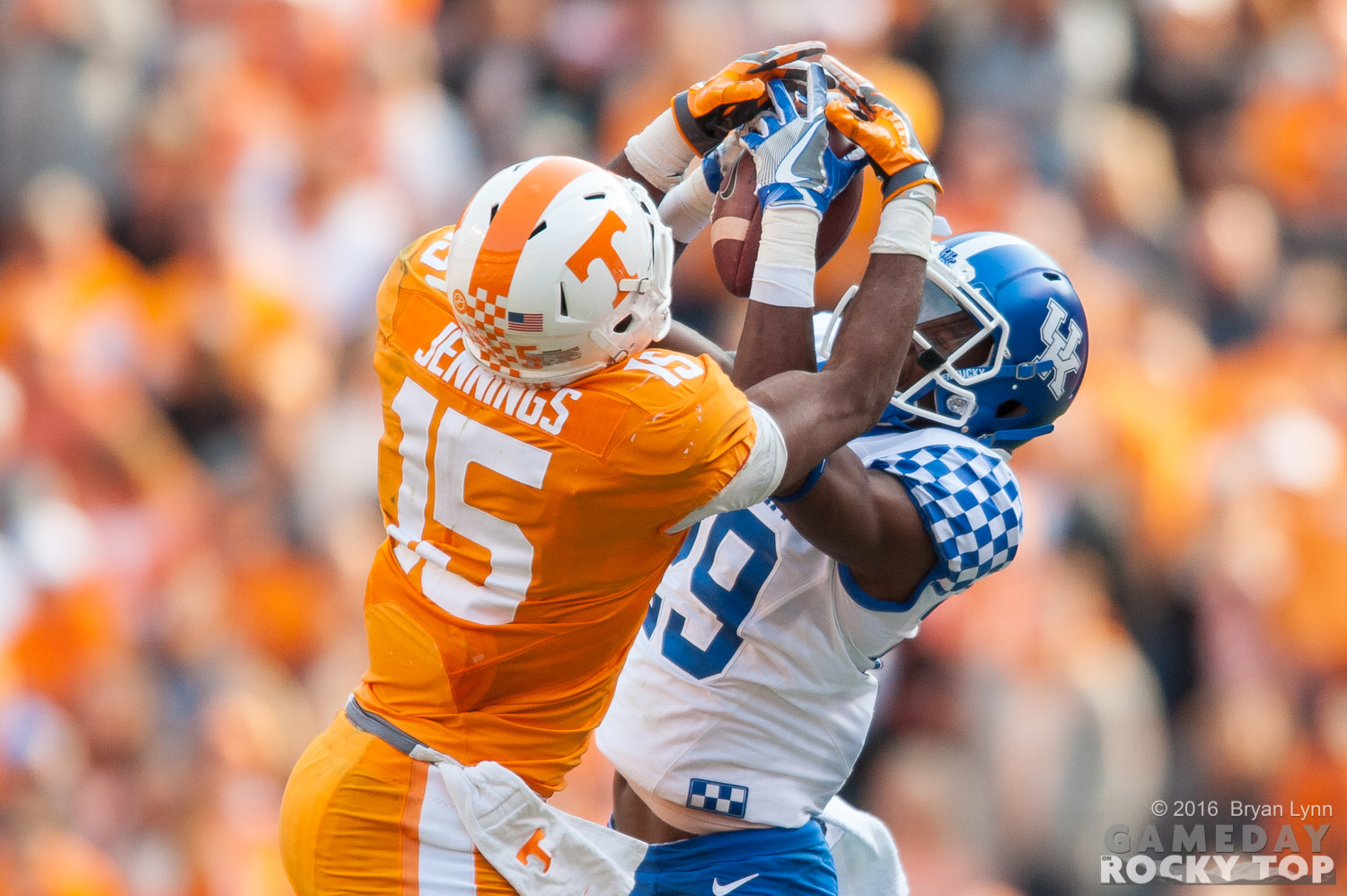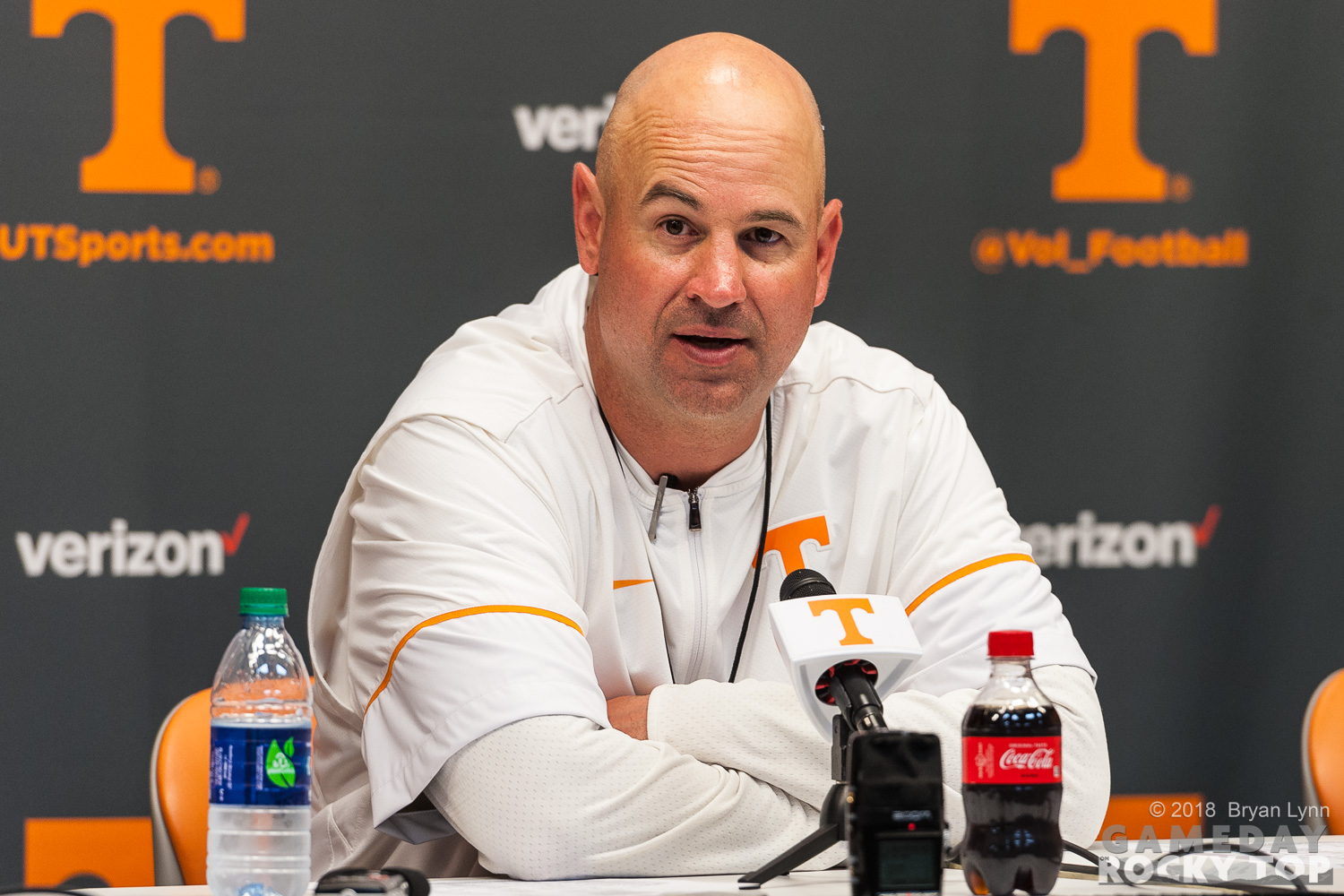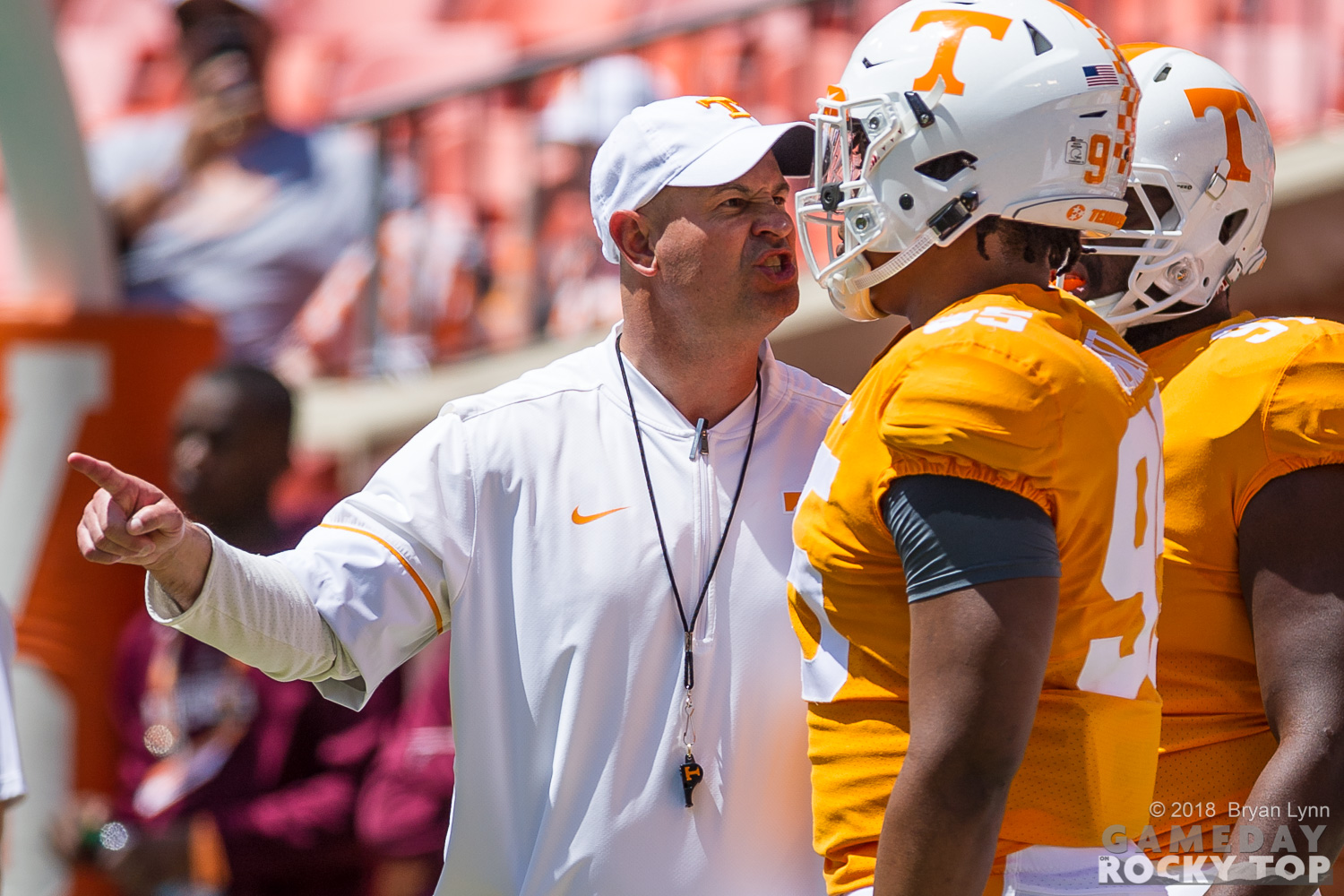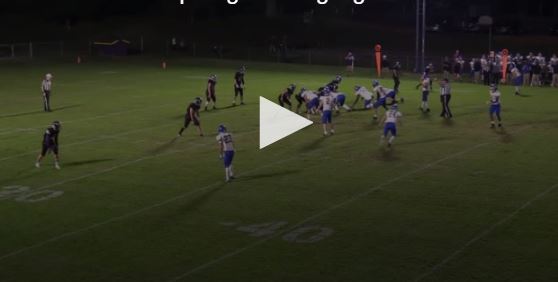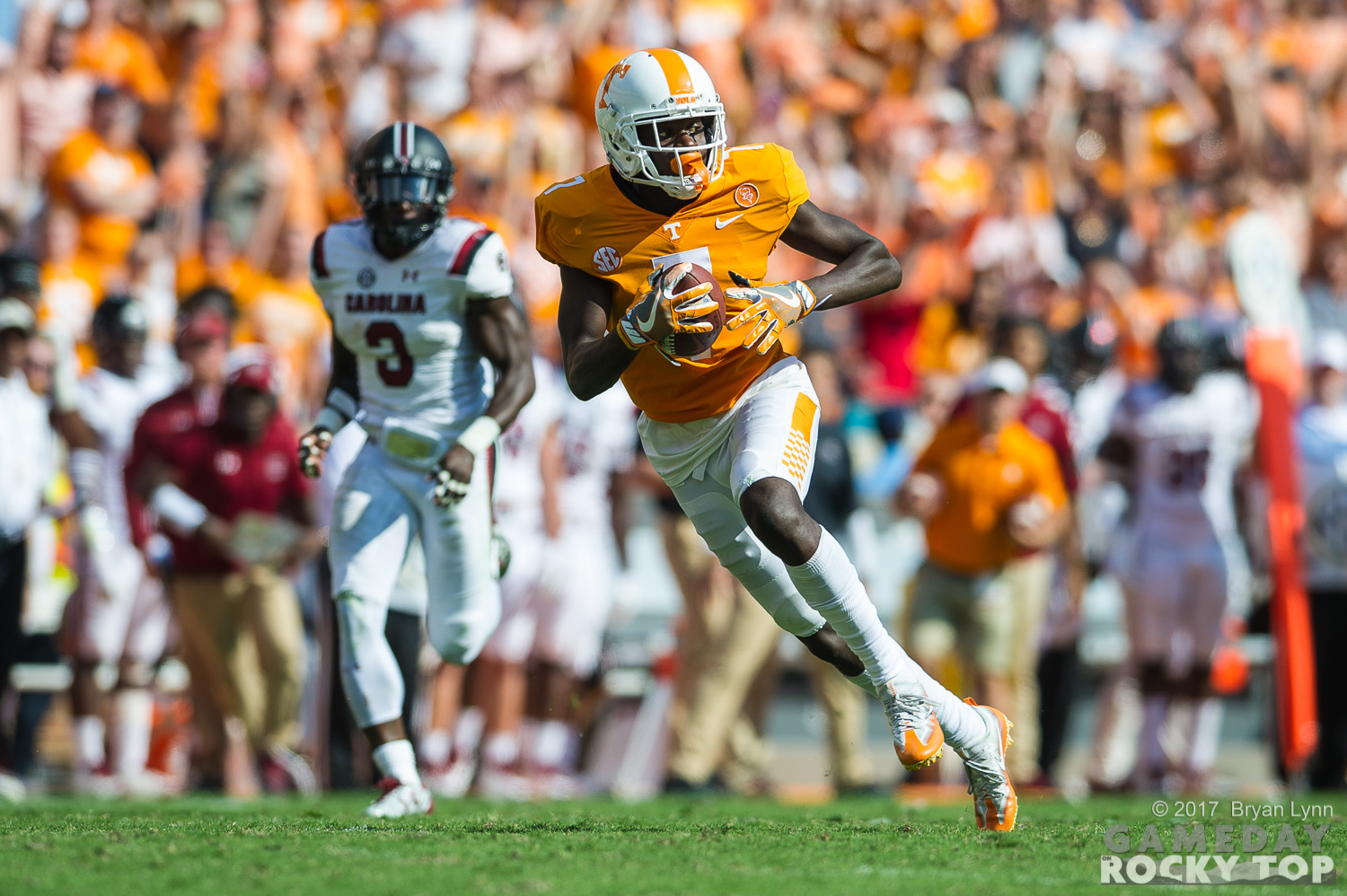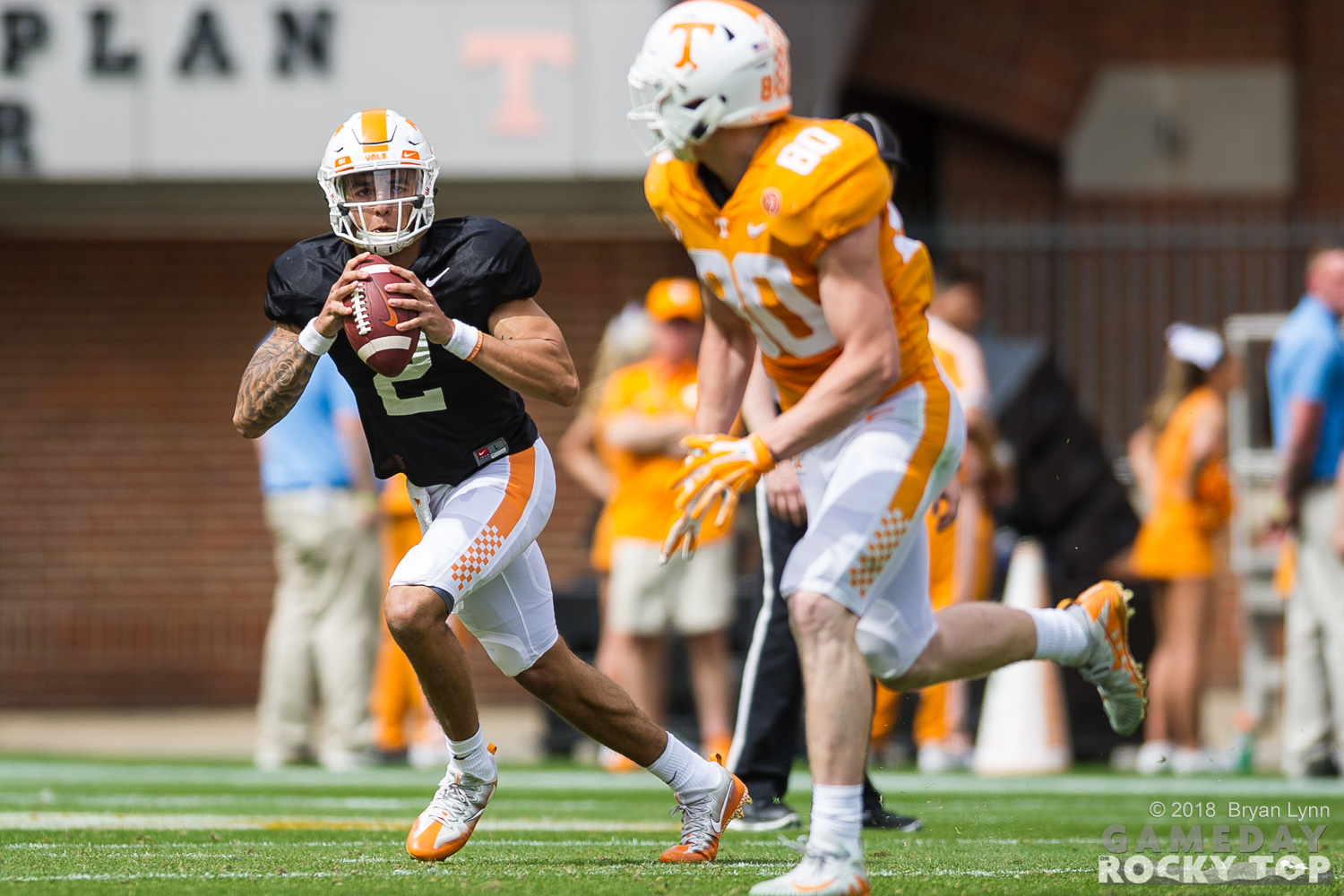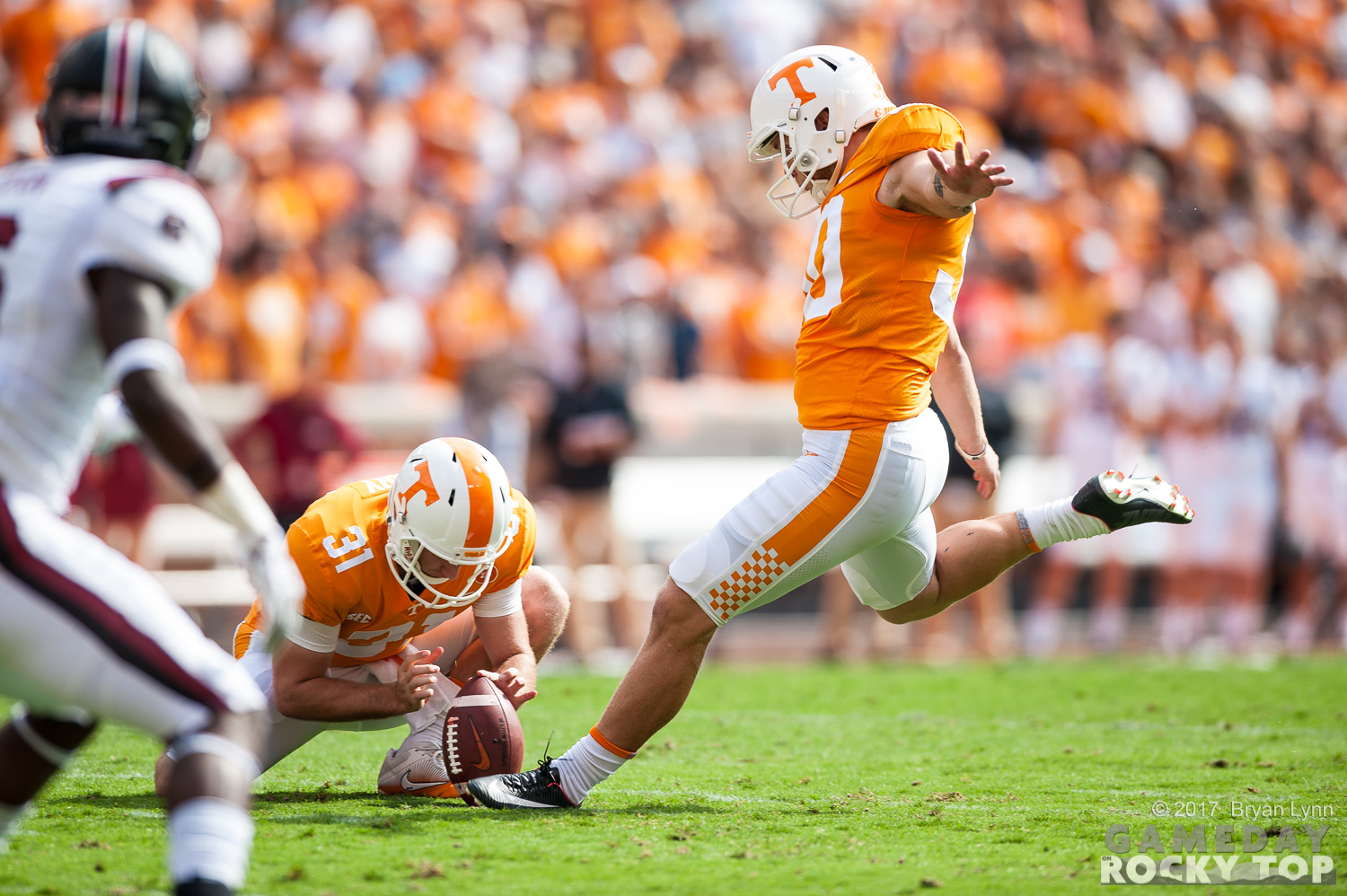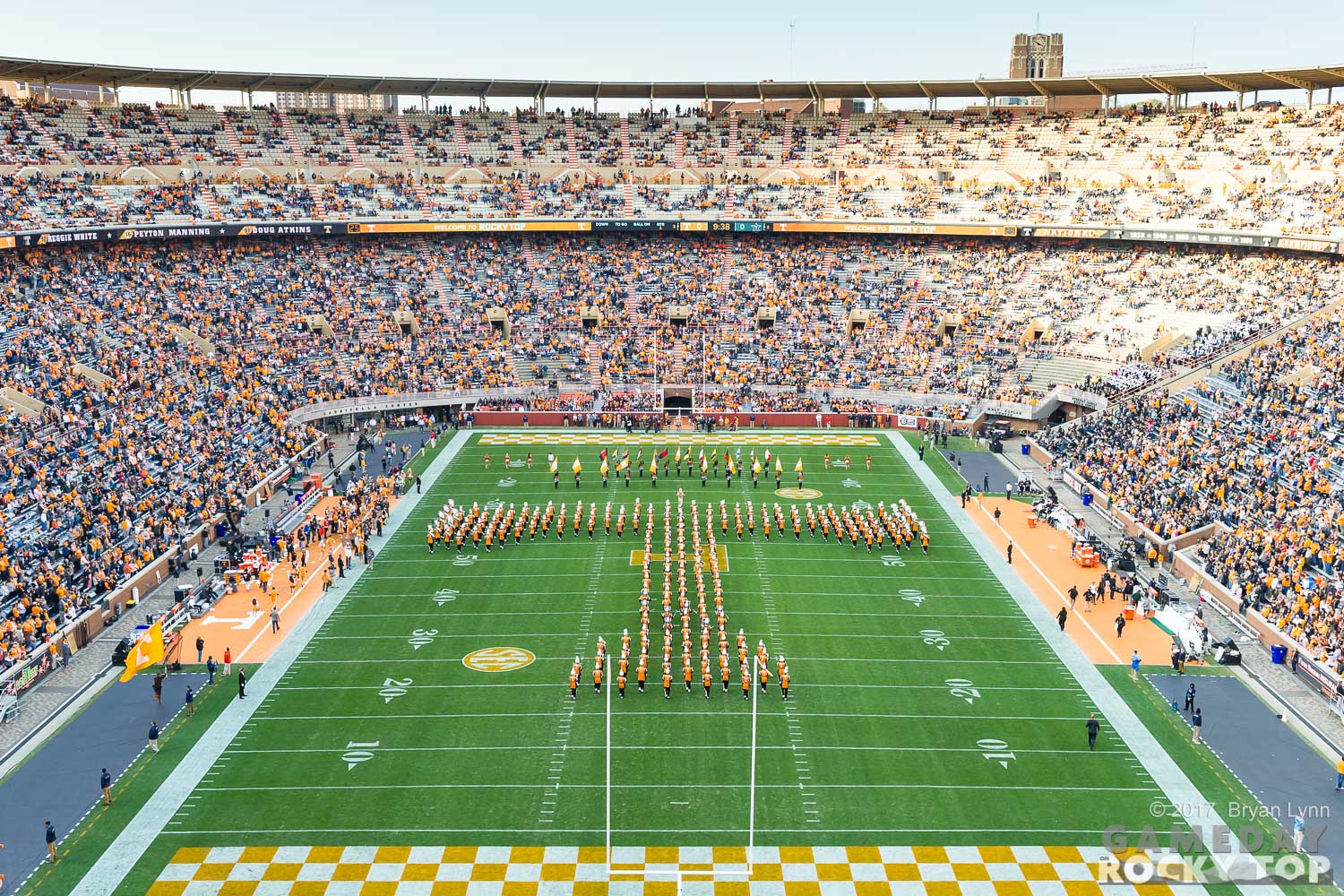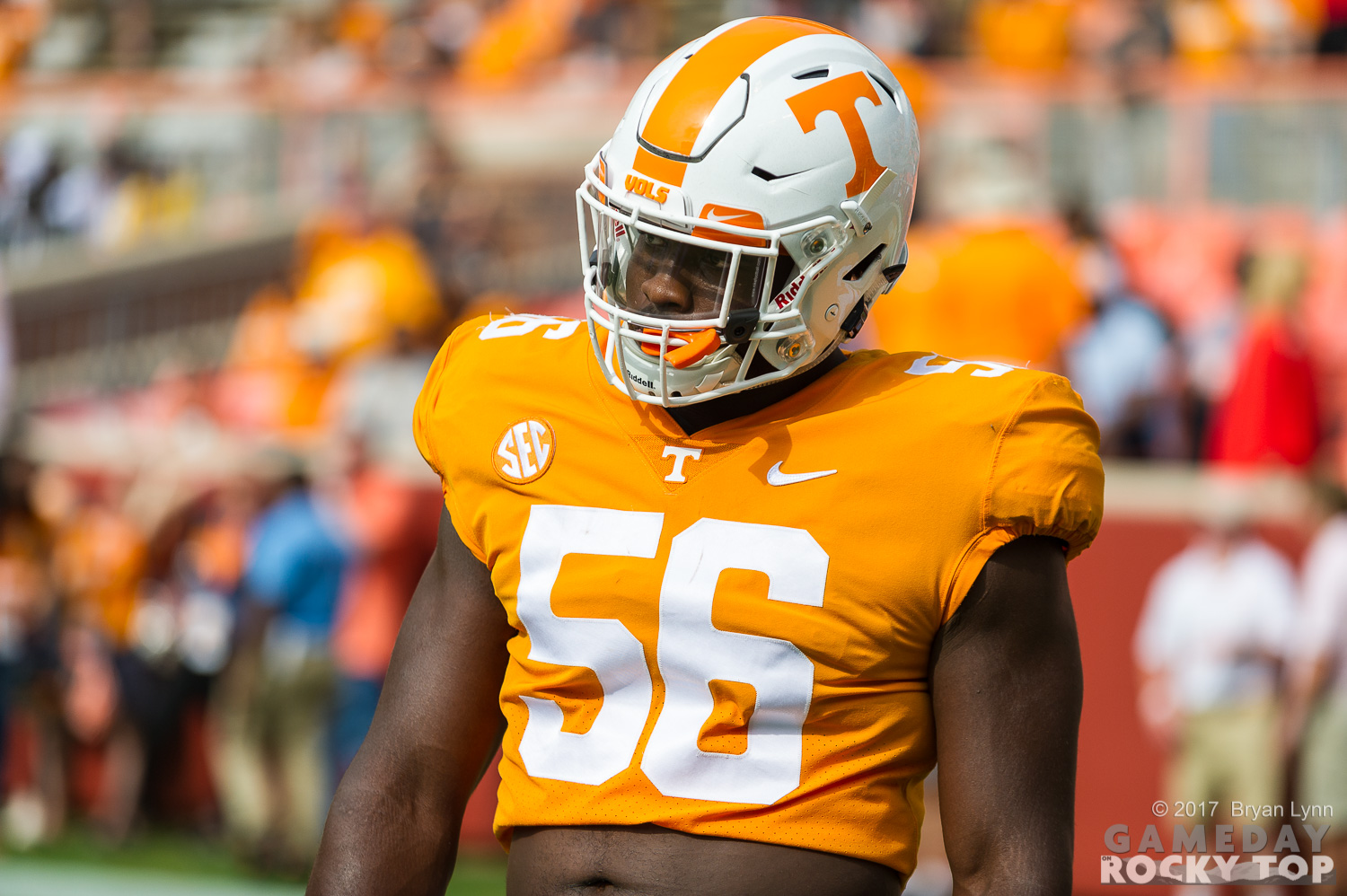Football is near.
And it won’t be long until we’re gearing ourselves up for the Vols to usher in the Jeremy Pruitt era.
We all know 2018 likely isn’t going to be a pretty sight, but that doesn’t mean we can’t talk ourselves into the Vols being much-improved under the former Alabama defensive coordinator. After all, Butch Jones is gone.
You just can’t help this time of year to be a tiny bit optimistic, even if logic (and recent history) suggests this is going to be yet another rebuilding campaign in Knoxville. Pruitt wants to win now, and he definitely isn’t used to losing after successful tenures in Tuscaloosa, Tallahassee and Athens, Georgia.
He’s outfitted UT’s roster with more size, and an infusion of collegiate talent. And he’s won some recruiting battles for guys who must be able to come right in and make an impact.
But what about the dudes already on the team? Who needs to make a major step forward in 2018 for the Vols to rise above the 4-8 doldrums of a historically horrible season where it looked like the team quit on former coach Butch Jones and his staff?
Let’s take a look at our latest installment.
OFFENSE
No. 4 Ryan Johnson, RS Sophomore Guard/Center
There are a ton of offensive line candidates who must step up and help star Trey Smith fortify the front, and even Smith has plenty of question marks next to his name after an undisclosed illness/injury kept him out of spring practice and there’s still a bit of uncertainty fogging his 2018 season.
A couple of players on the O-line made this list, and the first one we come to is Ryan Johnson, a former 4-star instate product from Brentwood Academy who enjoyed a solid spring and catapulted to the front of the race for the starting center gig ahead of Riley Locklear. Though Locklear may start at guard, he’s going to have plenty of competition from true freshman Jerome Carvin, and Johnson is expected to have his share of competition from Locklear as well. He’ll probablly rep at both spots. Brandon Kennedy stepping in as an Alabama transfer makes it an even healthier battle inside, and Johnson may find himself at guard.
Either way, he could settle firmly in the rotation.
He is extremely strong, possesses good size and is entering his third year of the program. It helps that Will Friend is a renowned offensive line coach who should get the most out of Johnson, especially after he’s played for unproven [Walt Wells] or flat-out bad [Don Mahoney] coaches his past two years.
At 6’6″, 305 pounds, Johnson is big enough to be a tackle, but he has never really fit at the position. After moving to the interior of the line, Johnson has proved his versatility and practiced at left guard this spring, too. So, it’s not a guarantee that he’ll play center.
To borrow a line from former coach/clown Derek Dooley, the offensive line looks like a “sack of potatoes” beyond Smith right now. Again, you could have inserted several guys like Marcus Tatum, Riley Locklear or Drew Richmond in this spot. But if Johnson can lock down the center of the line or a guard spot and not just be a leader but be a quality player, the Vols are going to surprise a lot of people on that offensive front.
DEFENSE
No. 4 Theo Jackson, Sophomore Safety
There’s no question that Nigel Warrior is going to start at one safety spot, but the Vols have a lit-up vacancy sign opposite him. After a good spring, rising senior Micah Abernathy probably holds the edge, and another senior who has played a lot of football — Todd Kelly Jr. — will have a say in that race, too.
But Tennessee desperately needs Theo Jackson to emerge and take over that other spot on the back side.
“Needs to,” you say? Yes. He does. “Why?” you ask.
The answer is simple: He’s a big, long athlete who has blazing speed and quality ball skills. He put on 15 pounds this offseason to creep up over 190 pounds, which is huge news because he has such a wiry frame. If the scheme can click for him, Jackson could turn a major concern for the Vols into a strength.
At 6’2″ and now over 190 pounds, Jackson could be primed for a breakout sophomore year. Is he always in the proper position? Nope. But he’s still a baby, and maybe somebody can actually teach him how to play this year, right? There’s a reason why Bob Shoop and his staff loved the Overton High School product, and there’s a reason why Jeremy Pruitt, Kevin Sherrer and Co. love him. The upside is astounding.
It would be best-case scenario for the Vols if Shawn Shamburger can rise up and seize the Star position and Jackson emerges at safety. If that happens, you could have a secondary of Warrior-Jackson-Shamburger and a cornerback battle between Alontae Taylor, Bryce Thompson, Baylen Buchanan, Maleik Gray, Marquill Osborne and Kenneth George Jr. That’s a super-inexperienced group, but there would be a ton of talent and speed in that group.
And, let’s face it: The Vols badly need talent and speed on the back end of the defense. Those two things can make up for a lot of mistakes.
It’s encouraging that Jackson had a great offseason in the weight room and added some good weight. Now, he just needs to make big strides where it counts.
Here’s the first installment [Jauan Jennings and Jonathan Kongbo].
